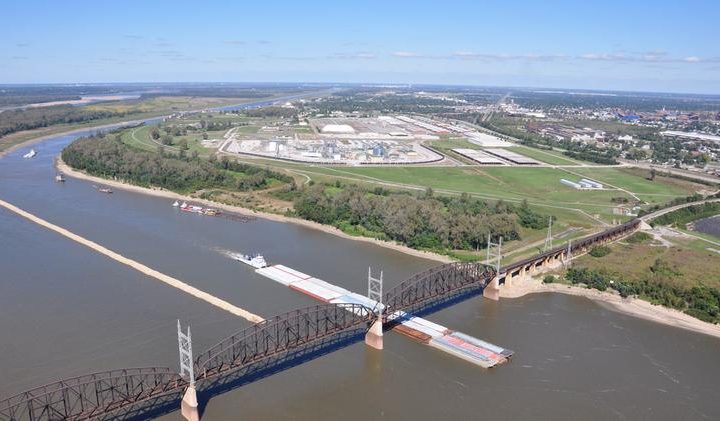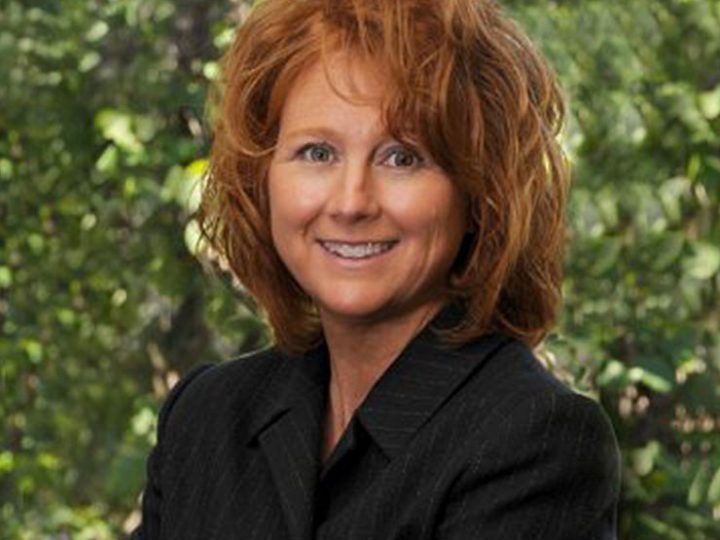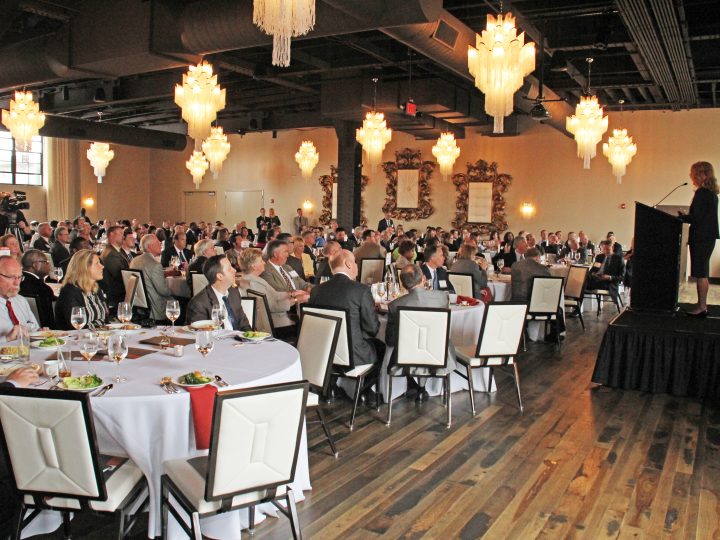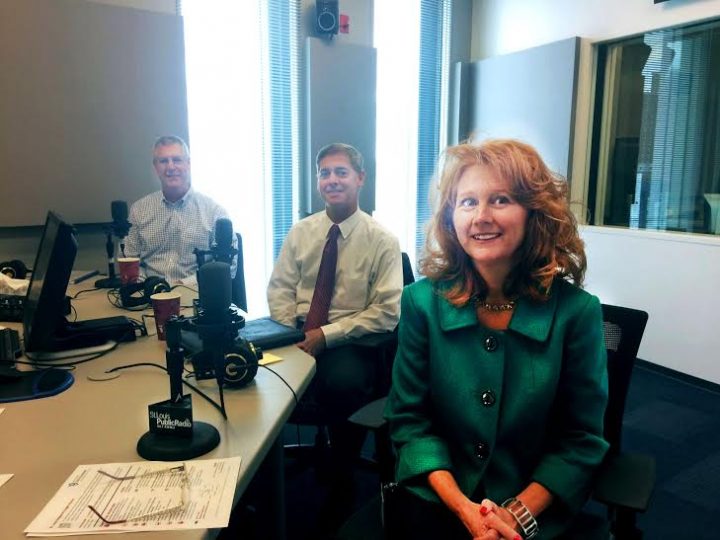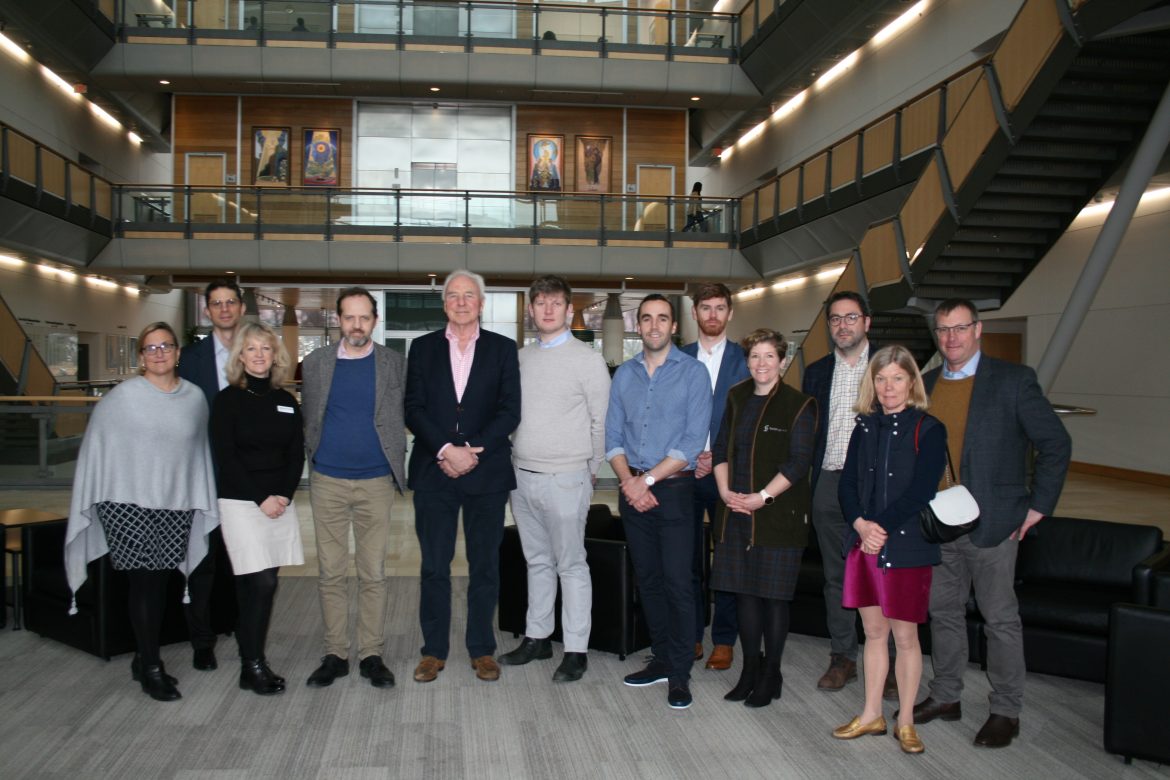
The Ag Coast of America recently welcomed a delegation of scientists, entrepreneurs and business leaders from Agri-TechE, one of the premiere agriculture technology associations in the United Kingdom (UK), along with British Government officials. They were in St. Louis from February 23 through 27 to explore increased partnership, collaboration and investment between the UK and the bi-state St. Louis region through meetings with world leaders in agriculture technology, leading research institutions, business accelerators, and venture capital firms; visits to St. Louis’ leading innovation districts; and a trip to the University of Missouri’s College of Agriculture, Food and Natural Resources in Columbia, Mo.
“I had a sense the individual parts were really strong in the agritech ecosystem here,” said Dr. Belinda Clarke, Director for Agri-TechE. “I think what’s come across since we got here is the connectivity between them. It’s really impressive that there’s been a unified approach with a master plan to make agritech a viable thing in the St. Louis region.”
The World Trade Center St. Louis (WTC) and the 39 North Innovation District (39 North), initiatives of the St. Louis Economic Development Partnership, are playing a leading role in that unified approach and they hosted this trade and investment mission as a follow up to a delegation they led to the UK in February 2019. Another contributor to the unified approach Clarke cited is the St. Louis Regional Freightway, which did a presentation for the visitors to highlight the St. Louis region’s prime logistics location and the factors contributing to recognition of the region as the Ag Coast of America.
Dennis Wilmsmeyer, executive director of America’s Central Port and chair of the St. Louis Regional Freightway’s marketing committee, showcased the region’s competitive advantages. Those include its central location in the country, strategic location on the Mississippi River where it offers the northernmost ice-free and lock-free access to and from the Gulf, service by six Class I Railroads providing intermodal connectivity in the nation’s third largest rail hub via a single switching carrier–Terminal Railroad Association of St. Louis (TRRA), and four interstate highways providing national access.
“Ag products and other commodities can get from the St. Louis region to 70% of the U.S. in just two days via truck,” Wilmsmeyer said. “Meanwhile, a 15-mile section of the Mississippi River in the bi-state St. Louis region is delivering the highest level of grain barge handling capacity anywhere along the river. It’s those types of advantages that initially garnered this region recognition as the Ag Coast of America.”
In recent months, with a focus on addressing global food security concerns, the St. Louis Regional Freightway, WTC and 39 North have been working collaboratively to further cultivate the ecosystem within an expanded Ag Coast footprint that includes the region’s unmatched concentrations of talent, capital, facilities, agritech companies and producers.
A roundtable discussion with the visiting group brought together various representatives of that ecosystem, including Climate Corp, a wholly owned subsidiary of Bayer; Bunge NA; Yield Lab, which provides venture funding for early stage agritech companies; the National Corn to Ethanol Research Center based on the campus of Southern Illinois University-Edwardsville; PNC Bank; and utilities Ameren and Spire. Facilitated by John Jansen, Climate Corp’s Vice President for North America, the robust discussion began with the visiting delegates sharing their initial impressions of the St. Louis region. Those impressions were overwhelmingly positive, with the visitors citing the nurturing climate for startups, the deliberate approach to building an agritech ecosystem, the willingness of the people they met to directly engage, and even the buildings and public spaces in the region’s innovation districts fostering opportunities for collaboration.
Sam Watson-Jones, a principal with the British-based Small Robot Company, which is reimagining farming with robotics and artificial intelligence, noted that his company was thinking about St. Louis as an entry point to the U.S. market even before signing up for the trip with Agri-TechE. He was particularly interested in learning more about the availability of talent.
Jansen, who came to St. Louis from San Francisco, reassured him that the Midwest is a great place to recruit talent and also highlighted how affordable it is to grow a business in the region.
Also among those in attendance at the roundtable was Alan Gogbashian, the British Consul General to the Midwest, who complimented the collaboration between Agri-TechE and the St. Louis region as remarkable and exceptional and something that his department wants to support.
“Now that the U.K has left the EU and we are on the verge of starting negotiations with the U.S. on a free trade agreement, agriculture will be an important part of the discussion, and we can’t discuss ag without discussing the Midwest,” said Gogbashian. “I believe future collaboration between the Missouri and UK agri-tech ecosystems has the potential to be exceptional and remarkable and I am keen to do all I can to support it.”
Clarke said she felt confident that, by the end of the visit, her group would have made the acquaintance of most of the key players in the region’s agritech sector, something that would make it easier for any of the companies in her organization who may be looking to have more of an embedded presence in the St. Louis area.
“The culture is one of the things I picked up, particularly the talk about being a highly-connected community and the few degrees of separation between key players,” said Clarke. “Small town mentality, in this context, is a really positive thing in that if the person you’re talking to doesn’t have the answer, they are one phone call away from those who do. We pride ourselves on that in the Cambridge cluster as well. We know that’s something that makes it easy to start, easy to thrive, easy to grow.”
Dan Larn, principal with Willand Group, another of the visiting companies looking at the St. Louis region as a possible home for their U.S. operations, agreed. Willand designs and supplies advanced livestock farming systems housed in structures actually manufactured by Arizon Building Systems based at America’s Central Port in Granite City, Ill.
“We knew we were going to set up a base somewhere in the U.S. and basically with St. Louis being so central and having such good access and Arizon being here, we figured it was as a good a place as any,” said Larn. “This trip has allowed us to see what other value we could get out of being here, and we’ve been really impressed.”
“These visits are clearly helping parties on both sides to make many important connections and fostering meaningful discussions centered on identifying additional opportunities for collaboration, particularly around the areas of agriculture technology, agri-business and plant science,” said Tim Nowak, Executive Director of the World Trade Center St. Louis.
“We’re thrilled that the impressive agtech ecosystem that has been carefully cultivated in the St. Louis region is being so well received by the UK delegates, and we’re excited that they see value in what the Ag Coast of America has to offer,” said Janet Wilding, who heads the 39 North Innovation District for the St. Louis Economic Development Partnership.
For more information, visit thefreightway.com, stlpartnership.com, 39northstl.com, and worldtradecenter-stl.com/.
